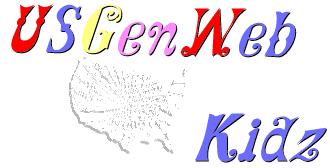Advanced Genealogy

Records, Records.. where are the Records!
OK, you know the basic tools of genealogy, and have picked an objective, or two
for your Rooting.
I will now go over some more advanced ideas and strategies for getting you
search to be more effective.
I will all so give you locations of where you can get some of that information
on line and how to evaluate that
information.
- Researching the Library
- Researching the Courthouses
- Researching Cemeteries
- Researching the Family History Centers
- Researching On Line
Researching the Library
To start your more advanced search let's talk about getting ready for a trip to
do some researching, let's say at
the library in the county you are researching (if you are lucky enough to live
there). You will need to take several
things with you so lets make a check list for your trip.
Most of these things are obvious, but some are not.
- Pencils (several just in case)
- Camera (to take pictures of important finds)
- Notebook (with lots of extra paper for notes)
- copy of your pedigree English / Spanish
- copy of the family history sheet of person(s) you will be researching
- your research log English / Spanish
- your copy's of any letters relevant to your present search
- extra change for copy machine or phone
Remember to be respectful of the other researchers, and to not only provide a quiet place to research, but to respect the documents or materials you are using.
Researching Courthouses
You can do most of your Vital Records research in a Courthouse. The are the place most of the original records were kept. A lot are still kept in County Court houses to this day. But some records are now being kept at the State level. If you are researching before the turn of the Century it is even harder. Most States and counties were not making people record birth and death records before about 1904
Researching Cemeteries
Some cemetery records can included burial permits, and death indexes, as well as tombstone inscriptions. These records usually show names, birth and death dates; sometimes, they include information on surviving family members.
Obituaries can be used to find what cemetery an individual is burred in, as well as names, dates, places of birth, marriage, and death, an obituary often identifies the deceased individual's relationships with other individuals.
You will want to make sure that you respect the rules of the cemetery. You can contact the church, or the person responsible for the care of the cemetery (sometimes called a sexton), to find out visiting hours, and other rules.
Not only do the tombstones provide you with factual data for your research, they can also provide you with a glimpse of the ideas, or beliefs the person or their family held dear. It can do this through the images carved on the stones.
Researching Family History Centers
Family History Centers are branch facilities of the Family History Library in Salt Lake City. Centers provide access to most of the microfilms and microfiche in the Family History Library to help patrons identify their ancestors. Everyone is welcome to come to the centers and use Family History Center resources.
Family History Centers are located
Researching On Line
Please let me know If you find any problems with the links on this site or if you have an idea for this page. You can email
Stuff for Kids
Q: How Did the State Get Its Name?
A: The Spanish first called the area "Colorado" because of its red colored earth. In 1861 Jefferson Territorial officials decided that "Colorado" would be a good name for the territory. The Colorado Territory then became the State of Colorado in 1876.
Read more…


